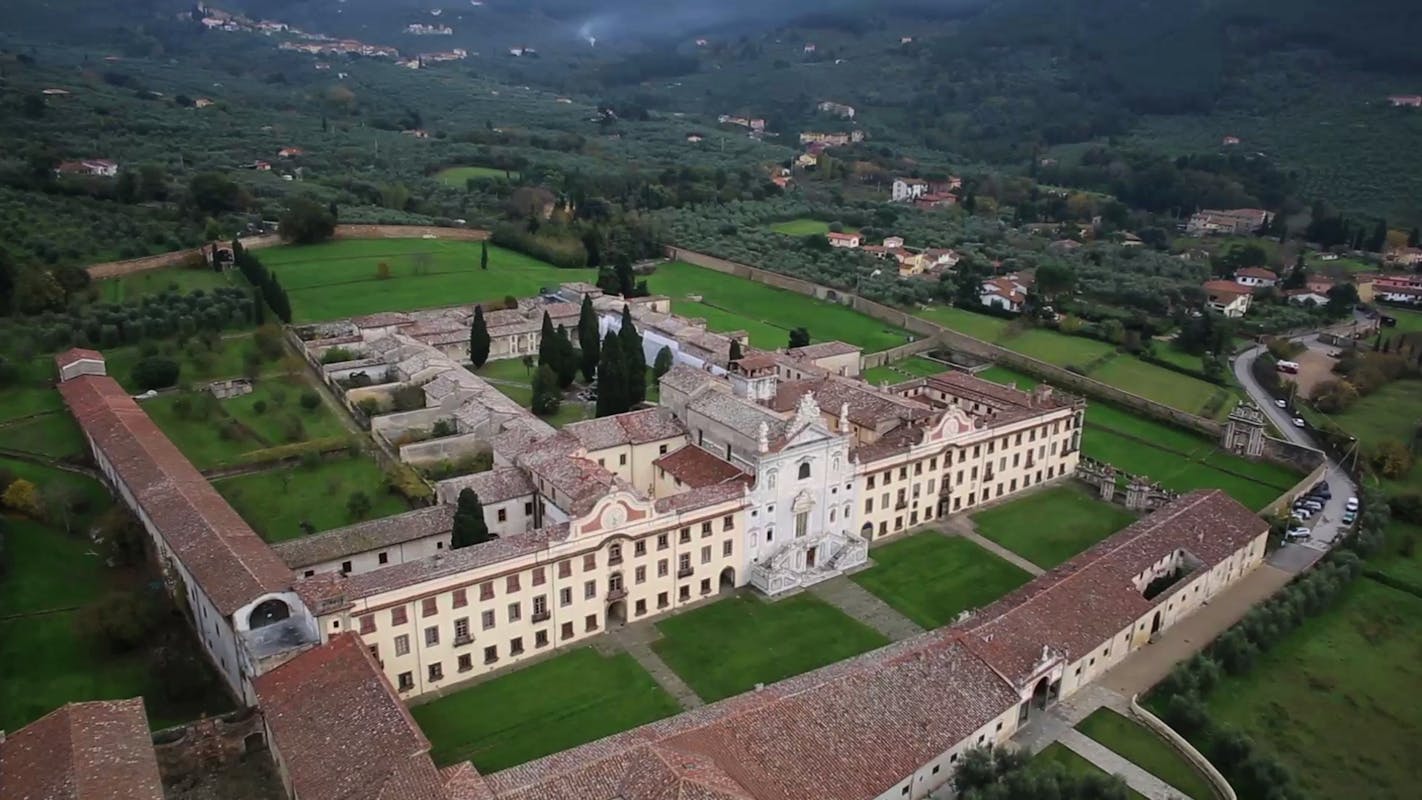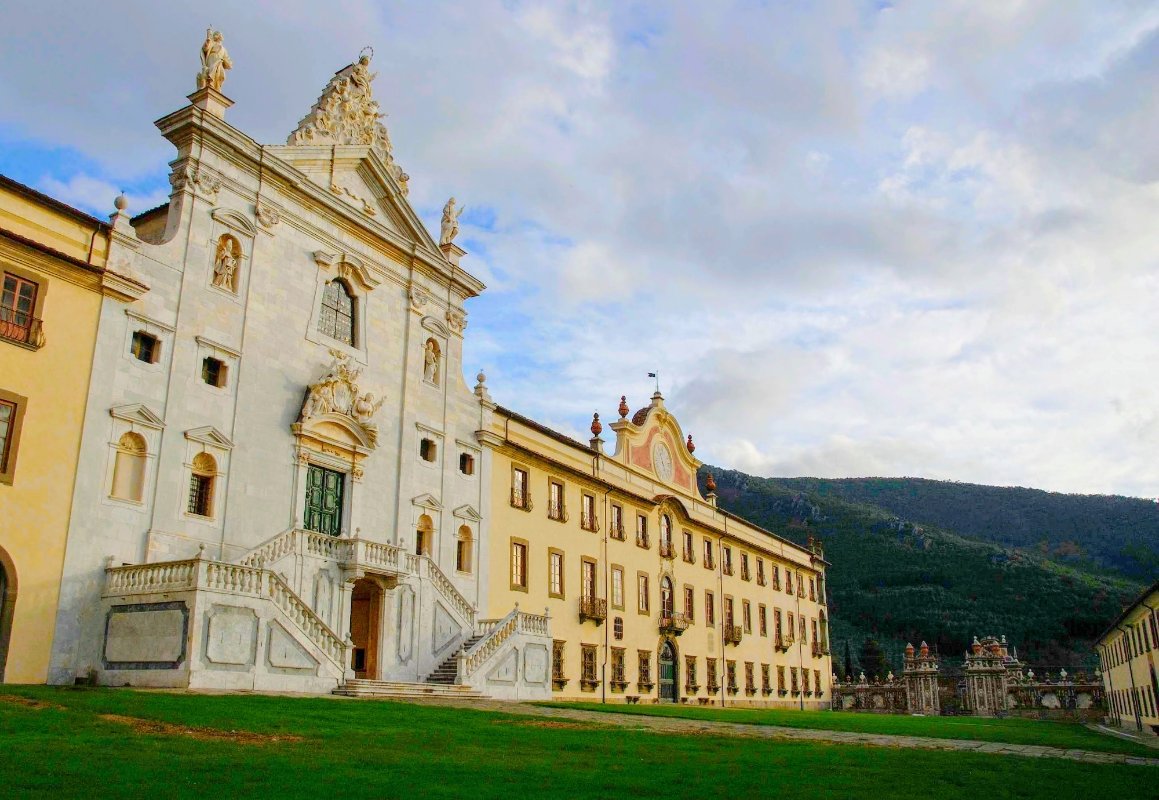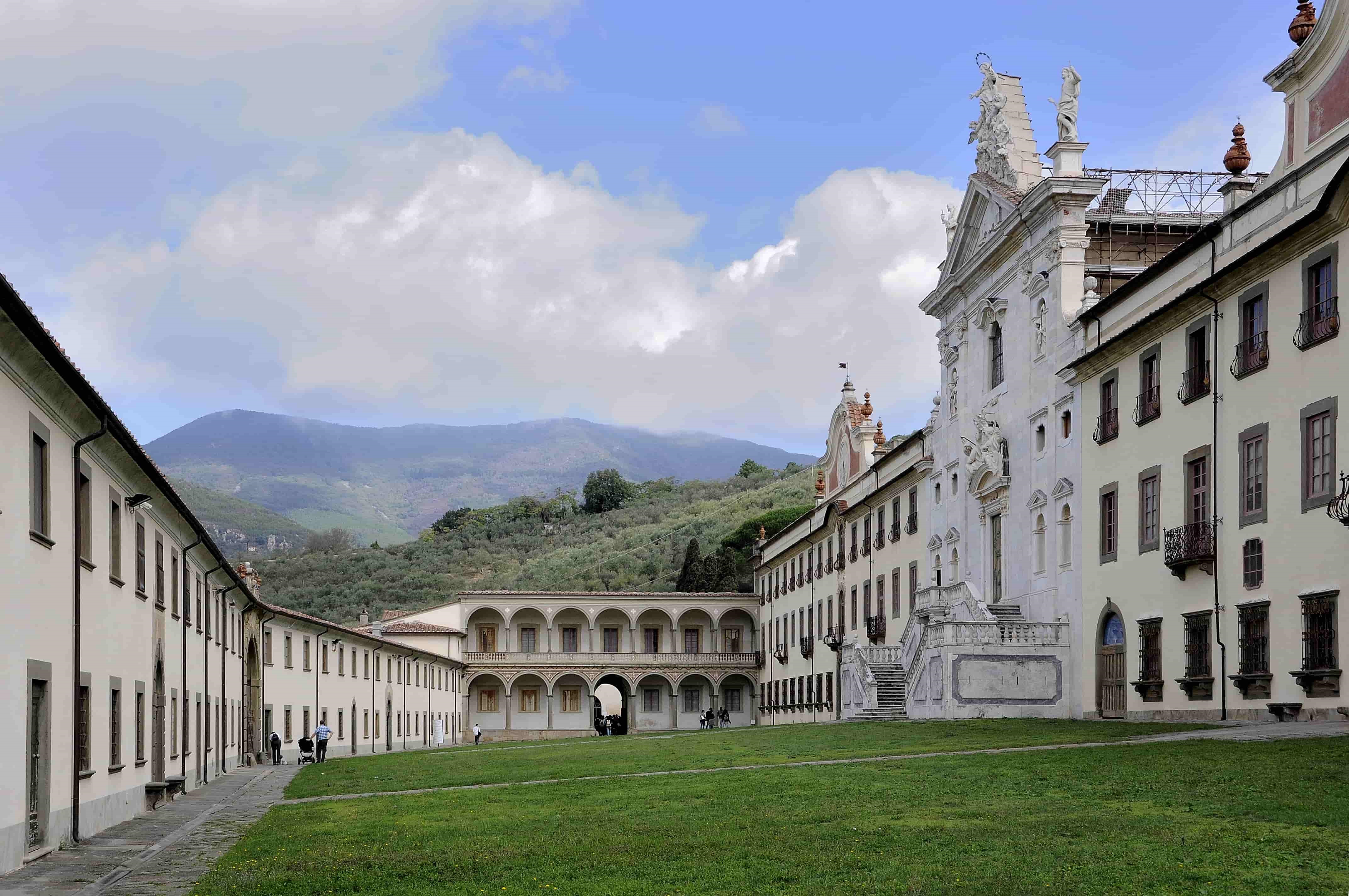



The Charterhouse, founded in 1366 thanks to the financial support of illustrious Pisan families, stands among the olive trees of the Valgraziosa, rather isolated from the town of Calci from which it is about 1 km away. The convent is accessed by two avenues with a suggestive pedestrian path from which you can enjoy the perspective view of the double facade of the complex. The outermost, lower, was intended for functions which the inhabitants of the area could also access: the pharmacy, the chapel of San Sebastiano or of the women, the parlor, and, separated from the court of honor, a large green lawn area, the facade of the monastery itself, in whose center is the spectacular facade of the church, covered in white marble, with a double ramp staircase and the crowning of the tympanum with the statue of the Assumption among angels.

The convent, cloistered monastery of the Carthusian order of San Bruno, was suppressed in the Napoleonic era first, and then Savoy, but was again inhabited by the monks until 1969 when they definitively abandoned it. In the Certosa the rooms dedicated to the hermit life are open to the public, the large cloister along whose arms are arranged the 15 cells of the monks, one of which is open to visitors, the rooms of a religious nature, the church and the chapels and those where he lived the cenobitic life, the refectory and the chapter.

In the sacristy the extraordinary Atlantic Bible of the XII century illuminated manuscript in four volumes is exhibited, returned to its original location in 2015 after a ten-year deposit in the National Museum of San Matteo in Pisa. The visit to the monumental part ends with the Grand Ducal guesthouse, the cloister of the guest-houses, the picture gallery and the long corridors whose walls are enriched with refined fresco decorations. On the ground floor of the Certosa Monumentale there are the rooms that host the historical archive and the monastic library, built in 1770 as part of the grandiose expansion and decoration of the monumental complex. The archive includes, in addition to several eighteenth-century boxes containing loose sheets, a diplomatic fund consisting of 3307 parchments dating from 999 to 1796, a fundamental source for the history of the Pisan territory. The monastic library, whose consistency counts 2320 copies, preserves several modern manuscripts, 5 incunabula, 65 sixteenth century, 165 editions of the seventeenth century and over 1200 editions datable to the eighteenth and early decades of the nineteenth century; This is what remains of the original library equipment, the size of which prior to the decommissioning of the monastery decreed in 1972 by the General Chapter of the order far exceeded 10,000 units of manuscripts and printed volumes.
Certosa di Pisa
Address: Via Roma, 79, 56011
Phone: 050 938430
Site:
beniculturali.itLocation inserted by
Culturalword Abco